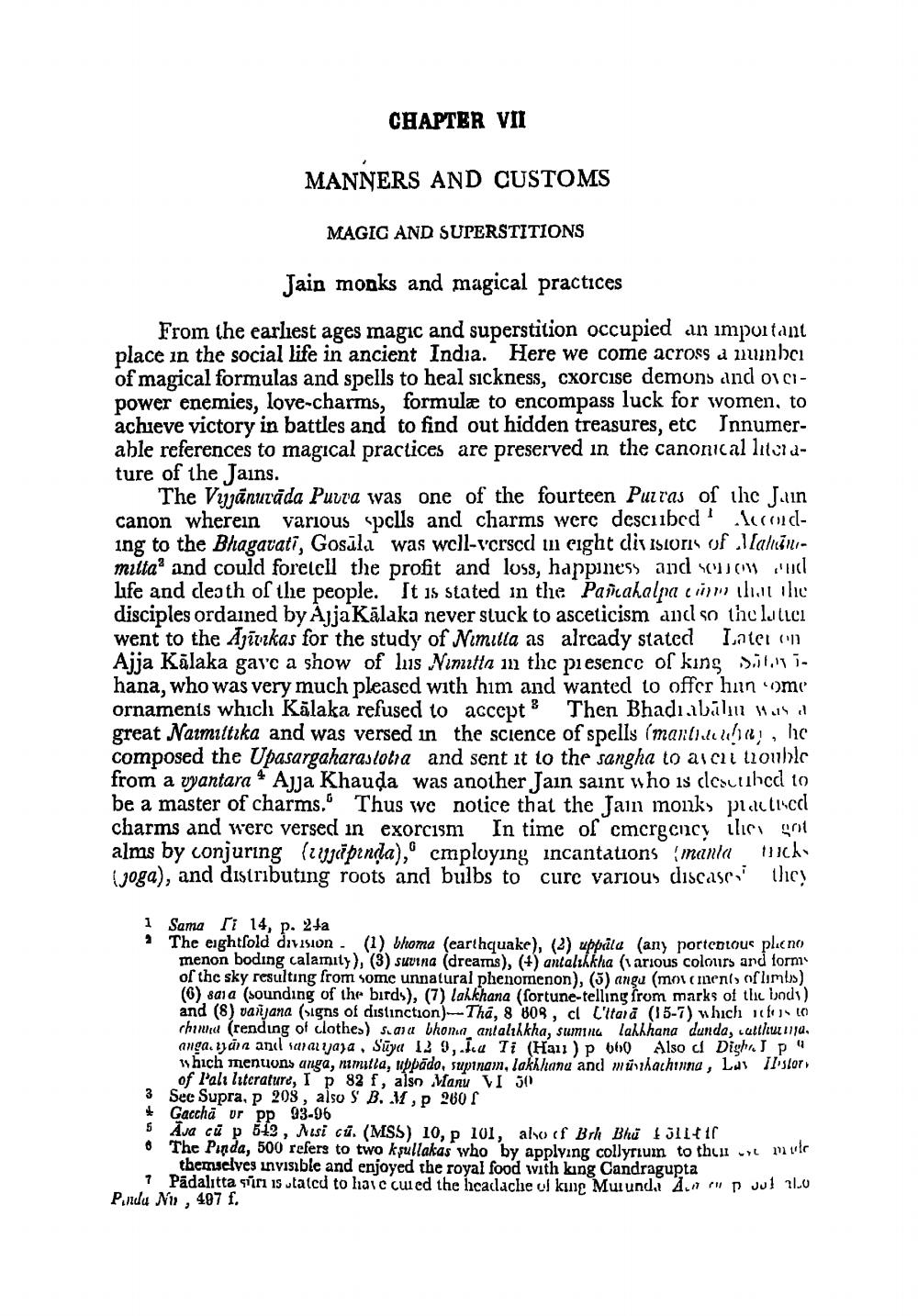________________
CHAPTER VII
MANNERS AND CUSTOMS
MAGIC AND SUPERSTITIONS
Jain monks and magical practices
From the earliest ages magic and superstition occupied an important place in the social life in ancient India. Here we come across a number of magical formulas and spells to heal sickness, cxorcise demons and overpower enemies, love-charms, formula to encompass luck for women, to achieve victory in battles and to find out hidden treasures, etc Innumerable references to magical practices are preserved in the canonical literature of the Jains.
The Vyjanurada Puura was one of the fourteen Putras of the Jain canon wherein various spells and charms were described According to the Bhagavati, Gosala was well-versed in eight divisions of Mahinmitta' and could foretell the profit and loss, happiness and soow and life and death of the people. It is stated in the Pamakalpa cum that the disciples ordained by AjjaKalaka never stuck to asceticism and so the latter went to the Ajivkas for the study of Nimitta as already stated Later on Ajja Kālaka gave a show of lus Nimitta in the presence of king axihana, who was very much pleased with him and wanted to offer hun ome ornaments which Kalaka refused to accept Then Bhadiabalu was a great Naimiitika and was versed in the science of spells (mantrauba, he composed the Upasargaharastotra and sent it to the sangha to aver trouble from a vyantara Ajja Khauda was another Jain saint who is described to be a master of charms. Thus we notice that the Jain monks practised charms and were versed in exorcism In time of emergency ile got alms by conjuring (japinda), employing incantations (manla (joga), and distributing roots and bulbs to
tuck
cure various diseases they
1 Sama i 14, p. 24a
2
The eightfold division - (1) bhoma (earthquake), (2) uppäta (any portentous pheno menon boding calamity), (3) suvina (dreams), (4) antalikkha (various colours and forms of the sky resulting from some unnatural phenomenon), (5) angu (movements of limbs) (6) saia (sounding of the birds), (7) lakkhana (fortune-telling from marks of the body) and (8) vanjana (signs of distinction)-Tha, 8 808, cl L'itara (15-7) which refers to china (rending of clothes) sara bhoma antalikkha, sumine lahkhana dunda, atthurma anga, yara and sarajaya, Suya 12 9,.Ja Ti (Hai) p 660 Also ci Digha Jp " which menuons anga, nimitta, uppado, supinam, lakkhana and muhachinna, Las History of l'ali literature, I p 82 f, also Manu VI 50
3 See Supra, p 208, also S B. M, p 260 f
Gaccha ur pp 93-96
5 Ava cu p 512, Nisi cu. (MSS) 10, p 101, aho cf Brh Bhu 1511tif
mule
6 The Pinda, 500 refers to two ksullakas who by applying collyrium to the themselves invisible and enjoyed the royal food with king Candragupta
7
Padalitta siri is stated to have cured the headache of king Murunda Ap out 1.0 Pinda Nu, 497 f.




